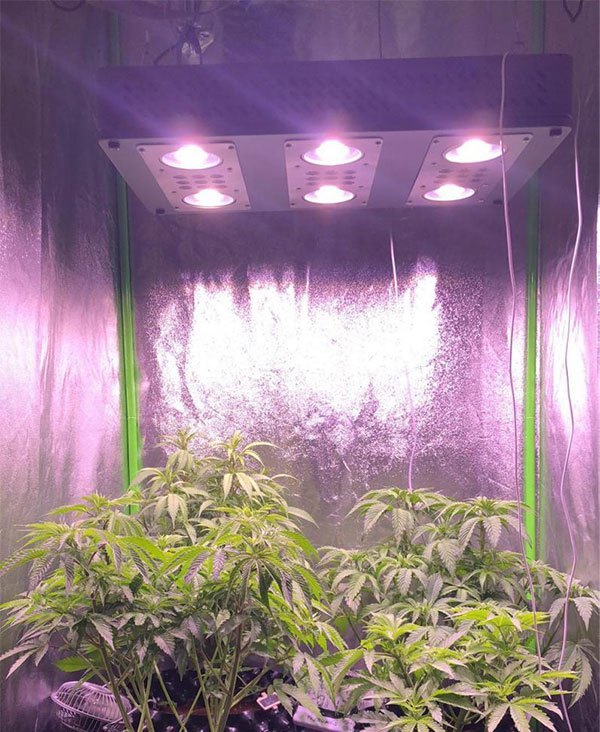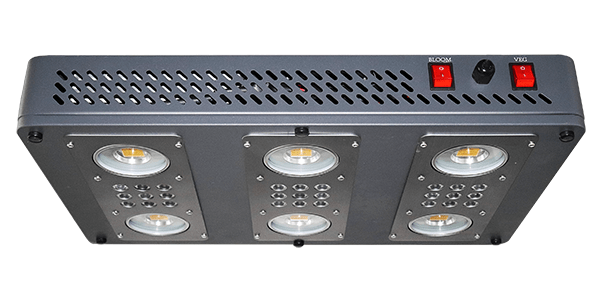
Light is necessary to grow plants indoors, but if the indoor light is strong, it will burn the plants. Therefore, the distance between the LED pant grow light and the plant is very important.
The Distance Between LED Lights And Plants In Each Growth Stage
It is important to understand that there is no universal rule for how far to place LED lights ( Is COB LED Grow Light Good For Your Indoor Plants ) from plants in each phase of growth. Different manufacturers construct their LED lights in different ways. There are multiple details to take into consideration, such as the power and angle of individual LED diodes within a fixture and the use of lenses to reflect light downwards. The best way to get that perfect distance between the light and your canopy is to consult with the manufacturer.
The second thing to keep in mind is that the correct LED light placement changes for each stage of growth. If your LED is dimmable, you can use dimming to adjust the intensity of the light on the plant surface. If your LED is not dimmable, your only option is to change the hanging height. These examples aren't hard-and-fast rules, so don't follow them without the blessing of your light's manufacturer. But just to give you a ballpark sense of what LED light placement generally looks like throughout the growth cycle:
LED Light Placement For Seedling Stage
Seedlings need the least intensity and most distance between the canopy and the lights. You may have the instinct to blast these little guys with high-intensity light to promote fast growth. The truth is, they're young, vulnerable, and likelier to thrive with a gentler approach.
Vegetative Stage
In the vegetative stage, you want to get your LED lights closer to your plants. In general, plants in veg only need about half the light that they need in bloom. It follows that you could have up to twice the hanging height that you use in bloom.
Flowering Stage
It's in the flowering stage that you really need the highest intensity. It is important to build in a “hardening off” phase as you move from veg to bloom. Slowly increase the intensity or lower the hanging height until you reach the manufacturers recommended height in bloom.
Again, these are general guidelines. Discuss the ideal distances with your manufacturer and keep an eye on your plants for signs that you're overloading them. If your plants are getting too much light intensity, they'll let you know.
Here's How to Recognize Light Burn On Your Plants
Because LED lights give off so little heat, you don't run much risk of causing heat damage by placing your fixture too close to the canopy. What you do risk is light burn. Unfortunately, the light burn is easily mistaken for nitrogen deficiency, and many growers wind up misdiagnosing their grow and addressing the wrong problem.
If your plants have light damage, you'll see symptoms such as:
Leaves point upwards.
Bleaching, which takes the form of white or yellow discoloration, typically on the leaves closest to the light.
Veins remain green even as the rest of the leaves turn yellow.
A nitrogen deficiency has similar characteristics, but there are a few notable differences.
A plant with a nitrogen deficiency also develops yellow patches, but the damage starts from the bottom of the plant and works its way up, while light burn begins at the top, closest to the lights.
In the case of a nitrogen deficiency, leaves wilt. In the case of a light burn, leaves turn upward and sometimes even become brittle.
The leaves of a nitrogen deficient plant fall off on their own. This does not happen to plants suffering from a light burn.
If it sounds like your plant has a light burn, it's time to reevaluate the placement of your LED lights.
Light Distance for Growing Cannabis With LED Lighting
LEDs produce less heat, and use less power overall. This can reduce energy bills massively, and a lot of growers are moving from the HID lighting to LED, as it is cheaper to run, and a more environmentally friendly option of grow lighting.
The problem here is that there are a lot of makes and models of LEDs, and each one will have a specific height it will be optimal at. Most of the time, this height will be found in the owner's manual.
LED lights produce less heat, so it can be hard to tell if the plant is too close by using the back of the hand test. You can get LED lighting very close to the plants, but because the light is so strong, you can still damage your plants and cause “light bleaching”.
Common LED Grow Light
Each model of LED light will have different types of lenses and lights in them. These lights and lenses work together, to make sure the light is optimal at a certain distance, usually around 16 inches above the top of the plants.
It is not easy to tell the best light distance for growing cannabis with LED. But never bring the light closer than 14 inches, and if you see any signs of the plant turning white at the top, you need to raise the light immediately.
For a more specific answer you can ask for help in our cannabis growers forum. Many growers use LEDs, and maybe someone is using the same model as you are, so they can give you experienced advice on the best light distance for your LED light.
COB Lighting

COBs are another form of LED lighting, but they are made with far fewer diodes (lights). Instead of lots of lights, there will just be a few more powerful lights. Again, like most LED lighting, the distance you need to keep them from your plants will differ from model, and maker. You should check the instruction manual for the best light distance for growing cannabis.
Just because COB lights are small, you should not underestimate how powerful they are. They should be no closer than 12 inches from the top of the plants.
The VANQ LED 600W COB LED Grow Light for cannabis recommend distance is 36 inches.
This is a common distance between the LED Grow Light and plants.
| Wattage | Veg | Bloom |
| 200W | 12-20 inches | 8-16 inches |
| 400W | 20-27 inches | 13-21 inches |
| 600W | 30-38 inches | 18-30 inches |
| 800W | 32-42 inches | 19-34 inches |
| 1000W | 36-46 inches | 21-36 inches |























